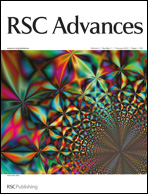Understanding the formation of [3+2] and [2+4] cycloadducts in the Lewis acid catalysed reaction between methyl glyoxylate oxime and cyclopentadiene: a theoretical study†
Abstract
The formation of the formal [3+2] and [2+4] cycloadducts in the Lewis acid (LA) catalysed reaction of
![Graphical abstract: Understanding the formation of [3+2] and [2+4] cycloadducts in the Lewis acid catalysed reaction between methyl glyoxylate oxime and cyclopentadiene: a theoretical study](/en/Image/Get?imageInfo.ImageType=GA&imageInfo.ImageIdentifier.ManuscriptID=C2RA22332E&imageInfo.ImageIdentifier.Year=2013)

 Please wait while we load your content...
Please wait while we load your content...